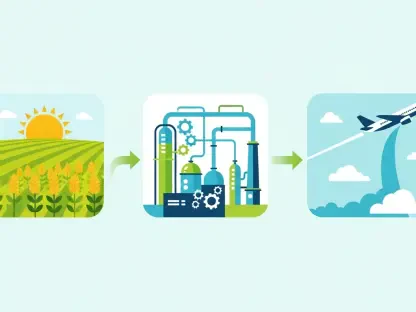Today, we’re thrilled to sit down with Christopher Hailstone, a seasoned expert in energy management, renewable energy, and electricity delivery. With his deep understanding of global energy markets and grid reliability, Christopher offers unparalleled insights into the complex dynamics of oil trade and its geopolitical implications. In this interview, we explore the recent fluctuations in oil prices, the impact of geopolitical pressures on major oil-importing countries like India, and the broader implications for global energy markets. We also touch on the challenges of balancing energy security with international policy goals and what the future might hold for oil supply and demand.
Can you walk us through the reasons behind the recent 1% increase in oil prices?
Certainly. The primary driver behind this uptick was a statement from President Trump indicating that India, a major buyer of Russian oil, had committed to halting those purchases. Since Russia supplies about a third of India’s oil imports, this news created a ripple effect in the market, suggesting a potential tightening of supply dynamics. Beyond that, market sentiment was also influenced by ongoing geopolitical tensions and the anticipation of shifts in global trade patterns. It’s a classic case of how political announcements can move markets, even before concrete actions are taken.
How significant was President Trump’s announcement about India’s promise to stop buying Russian oil in driving this price surge?
It played a substantial role, no doubt. When a country as large as India, which is heavily reliant on Russian oil, signals a potential shift in its sourcing, it raises questions about where that supply will be redirected or replaced. This uncertainty often pushes prices up in the short term as traders react to the news. However, the actual impact on prices will depend on how quickly and effectively India can pivot to other suppliers, and whether this promise translates into sustained policy action.
What broader geopolitical strategy is the U.S. pursuing by encouraging countries like India to stop purchasing Russian oil?
The U.S. is aiming to cut off a critical revenue stream for Russia by targeting its energy exports. This is part of a larger effort to apply economic pressure on Moscow, particularly in the context of the ongoing conflict in Ukraine. By reducing Russia’s ability to fund its operations through oil sales, the U.S. hopes to create leverage for negotiating a peace deal. India, as one of the largest buyers of Russian crude, is a key player in this strategy, and the focus on other major buyers like China next shows a broader campaign to isolate Russia economically.
What challenges might India face if it follows through on halting Russian oil imports?
India faces some steep hurdles here. With Russia accounting for roughly a third of its oil imports, cutting ties means finding alternative suppliers who can match that volume and price point. Switching suppliers isn’t just a logistical challenge; it involves renegotiating contracts, adjusting refining processes for different crude grades, and potentially facing higher costs. On top of that, energy security is a national priority for India, so any disruption could have domestic political and economic consequences. It’s a delicate balancing act.
How could India’s potential shift away from Russian oil impact the global oil market?
If India moves away from Russian oil, it could significantly alter global supply chains. You’d likely see increased competition among other major oil exporters to fill the gap, which could drive prices up temporarily due to heightened demand for non-Russian crude. At the same time, Russian oil might be redirected to other markets at discounted rates, potentially creating a two-tier pricing system. This kind of shift can create both challenges and opportunities for oil-exporting countries, depending on their production capacity and geopolitical alignments.
What are the key factors contributing to the recent slump in oil prices to their lowest since early May?
A big factor has been the escalating trade tensions between the U.S. and China, which have dampened expectations for global economic growth. When two of the world’s largest economies are at odds, it often signals weaker demand for oil, as industrial activity and consumer confidence take a hit. Additionally, there’s been a broader concern about sluggish demand in key markets like the U.S., evidenced by rising crude and gasoline stockpiles. These economic headwinds have weighed heavily on prices, overshadowing some of the supply-side concerns.
How do warnings from the International Energy Agency about future oil surpluses fit into the current market outlook?
The IEA’s prediction of a significant surplus next year is based on a combination of rising output from OPEC+ and other producers, coupled with persistently weak global demand. They’re pointing to a scenario where supply outpaces consumption, which could further depress prices if it materializes. This forecast adds another layer of complexity to the market, as traders and policymakers grapple with balancing immediate geopolitical risks against longer-term oversupply concerns. It’s a reminder that oil markets are often caught between short-term shocks and long-term trends.
What is your forecast for the trajectory of oil prices in the coming months given these mixed signals?
Looking ahead, I think we’re in for a period of volatility. On one hand, geopolitical developments, like potential shifts in India’s oil sourcing or further U.S. pressure on China, could keep upward pressure on prices. On the other, economic uncertainties and the looming surplus warned by the IEA could drag prices down if demand doesn’t pick up. I’d expect prices to fluctuate within a tight range in the near term, with sharp movements tied to specific policy announcements or inventory data releases. The market is on edge, and it won’t take much to tip the balance either way.









